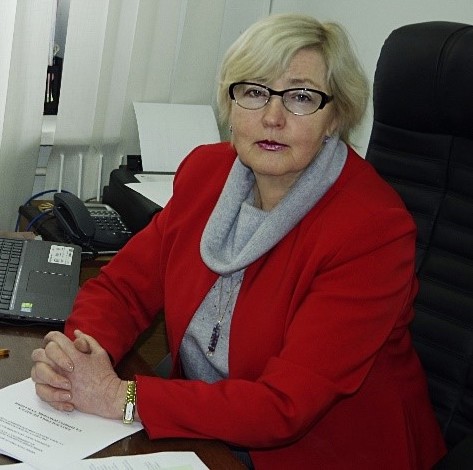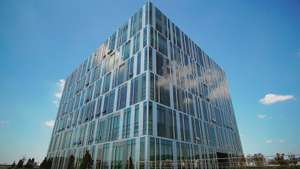
A study of air pollution with formaldehyde along the highways in Kyiv city.
 Olena Voloshkina 1* ,
Olena Voloshkina 1* ,  Rostyslav Sipakov 2
Rostyslav Sipakov 2 Olena Zhykova 3 ,
Olena Zhykova 3 ,  Julia Bereznitska 3
Julia Bereznitska 3
1D. S., Professor, Head (BrE) of Occupational Safety and Environment Department, 2Postgraduate at Occupational Safety and Environment Department, 3Kyiv National University of construction and architecture, Kyiv Ukraine, 4Ph. D., Assistant professor of Occupational Safety and Environment Department
Received: 04/20/2018, Accepted: 06/15/2018, Available online: 06/30/2018.
DOI: https://doi.org/10.32557/useful-2-2-2018-0001
HDL: http://hdl.handle.net/20.500.12334/20
*Corresponding author: e-mail: e.voloshki@gmail.com,
address: Povitroflotsky Avenue, 31, Kyiv, 03680 Ukraine
Under a creative commons license. Volume 2, Issue 2, 2018, pages: 01-07.
Author Keywords: environmental safety, environmental monitoring, formaldehyde.
Abstract
The problem of air pollution in the cities of Ukraine was described. The methodology of calculation of hydrocarbon emission on automobile overpasses and crossroads of Kyiv was suggested. By the number of bands, the number of cars was determined. The calculation has shown that at the same time near 300 cars can be on the overpass during peak hours. The average concentration of formaldehyde according to the calculations and observation data in 2016 was presented.
1. Introduction
Recently the problem of air pollution in the cities of Ukraine has become very sharp. [1,3,7,11 etc.] As main sources of formaldehyde which gets into the air the following groups are divided (which, in turn, are divided into primary and secondary): enterprises that use formaldehyde in their activities; sanitary burning of fuel and waste; movable sources; materials that contain formaldehyde (its evaporation occurs); city fires; land fields of domestic waste; natural sources. For the city of Kyiv, the formaldehyde formation from movable sources of hydrocarbon emission (secondary pollution) has a very powerful impact on atmospheric air pollution index. [4.11 and others]. It is the growth of number of vehicles that work on natural gas in big cities of Ukraine is connected with formaldehyde concentration increasing in recent years. The existing models and methods of calculation of formaldehyde concentration in big cities are connected, in particular, with the creation of mathematic models of air pollution basing on experimental data about pollution and on geoinformation system (GIS) data. The separate type of models concerns the realization of solving methods of spatial non-stationary, adequately diffusive kinetic equations for dissemination and turbulent dispersal of chemically reacting pollutants in the surface layer of atmosphere in urbanized areas. The nowadays existing methods of modelling both as the spatial dissemination of pollutants, analysis of regressive mapping dependencies and as the atmospheric diffusion models [7,8,9,14 and others] cannot be unified as there are a lot of differences of large cities which have been considered; so, many processes and atmospheric physic-chemical phenomena need to be included into the model.
References
[1] Kakareka S.V., Malchihina A.V. Estimation of sources and layers of formaldehyde admission into atmospheric air (on the example of Homel city). - Nature resources. -2011. -p.7-115.
[2] Skubnevskaya G.I., Dultseva G.G. Atmospheric pollution with formaldehyde. -Novosibirsk, 1994. - 70 p.
[3] Shevchenko O.G. The level of atmospheric air pollution with formaldehyde in Kyiv. O.G.Shevchenko, M.I.Kulbida, S.I.Snizhko, L.S.Shcherbuha, N.O. Danilova. - Ukrainian Hydrometeorological magazine, 2014, №14. - p. 2-22.
[4] Sipakov R., Trofimovich V., Voloshkina O., Bereznitska J. Assessment and forecast for the creation of photochemical smog over transport overpasses in Kyiv // Environmental safety and natural resources. – 2018. – Issue 1 (25). – p. 44-51. http://doi.org/10.32557/dsua/20.500.12334/24
[5] Trofimovich V.V. Monitoring of atmospheric air. Problems with modelling and predicting. V.V.Trofimovich, O.S.Voloshkina, M.M.Fandikova, I.V.Klimova. - Ecological safety and nature management, 2012. -Ed. 10. -102-120 p.
[6] Protection of atmosphere from industrial pollutions: 2 parts.; P1: translated from English. ed. Kalvert S., Ingund G.M.; Moscow Metallurgy, 1888. - 760 p.
[7] Formaldehyde pollution of city atmosphere and its dependence on meteorological factors. T.S. Selegei, N.N. Filonenko, V.A. Shlychkov, T.N Lenkovskaya. - optics of atmosphere and ocean. -Novosibirsk. -2013. -№ 25(5). -p. 422-426.
[8] Brigman H. and Graham L. “Air pollution and meteorology in a small city. The case study of Newcastle, NSW, Australia.” Fifth International Conference on Urban Climate, University of Londs, Poland, September, 2003.
[9] Richard C. Flagan, John H. Seinfeld. Fundamentals of air pollution engineering. California Institute of Tehnology, 1988 by Prentice-Hall, Inc. A Division of Simon & Schuster, Printed in the United States of America, 1988. – P. 542.
[10] Methodology of estimation of pollutants and greenhouse gases emission into the air from vehicles. Approved by State committee of Ukraine from 13.11.2008, № 452. - [electronic resource] - http://ukrstat.org/
[11] Snizhko S.I. Urbometric aspects of atmospheric air pollution in big cities. S.I.Snizhko, O.G. Shevchenko. - Kyiv: Ed. "Obrii", 2011. -297 p.
[12] Meteo observation dtat from Central Geophysical Observatory for 2013-2016. Kyiv city.
[13] Chuhai A.V., Patraman H.S. Atmospheric air pollution in the cities in coastal zone of the North West of the Black Sea by specific pollutants. scientific researches "Human and environment. Ecological problems". - № 1-2 (27), 2017. - p. 113-122.
[14] Andropov K.M. Spacial distribution of transport emissions in industrial cities. - Collection of works of III Russian conference "actual issues of modern science and technology development" Moscow, 2011. P. 11-17
Please cite as: O. Voloshkina, R. Sipakov, O. Zhykova, J. Bereznitska “A study of air pollution with formaldehyde along the highways in Kyiv city.” USEFUL online journal, vol. 2, no. 2, pp. 01–07, June 2018. DOI: https://doi.org/10.32557/useful-2-2-2018-0001









Comments